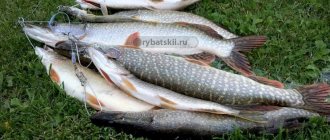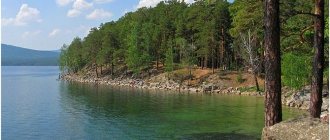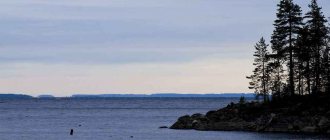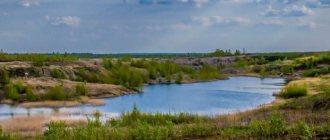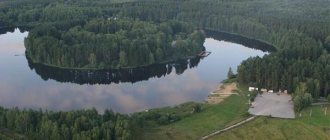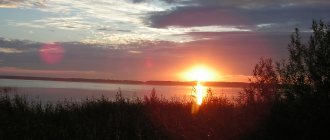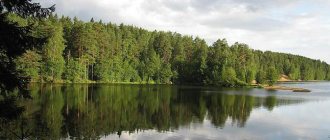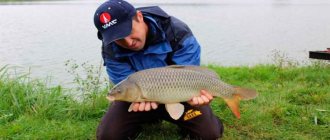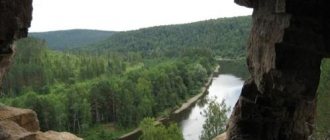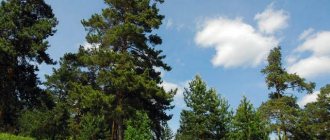Lake Chany is a large endorheic reservoir, which is a system of reaches interconnected by numerous channels. Its name comes from the Turkic language and is translated as “large vessel”.
There are many legends and tales associated with this place, the most popular of which is the belief about a mythical monster living in the depths of a reservoir. Many local residents say that they saw either a lizard or a huge fish that creates huge waves and overturns fishing boats. There is no scientific explanation for this phenomenon yet: none of the expeditions to Chany have seen anything like it.
Today the lake is a favorite vacation spot for many Russians.
Geography and origin
The largest body of water in Western Siberia is located in the Chanovsky district of the Novosibirsk region. The area where Lake Chany is located is called the Barabinskaya Lowland. Most of it is surrounded by forest-steppe, and only from the south can one observe the endless steppe landscape.
Experts date the formation of the basin to the end of the last ice age. The lake appeared approximately 10-13 thousand years ago. For hundreds and thousands of years, steppe vegetation prevailed here, and only 5.5 thousand years ago dwarf birches and similar shrubs began to grow along the banks.
Features of Lake Chany
The vats are located at an altitude of 106 m above sea level. The length of the lake is 91 km, width – 88 km. The surface of the water surface today is approximately 2000 km². The absolute maximum was recorded at the end of the 18th century, when the area of Lake Chany exceeded 12,000 km². Based on many years of observations, scientists concluded that recently this reservoir has noticeably shrunk.
The lake is recharged mainly with melt water. Two rivers flow into it - Chulym and Kargat, but they account for only a small part of the total flow.
The water of Lake Chany is slightly salted, and the concentration varies in different parts of the reservoir. Salinity levels in the southeastern part are slightly lower. The lake itself is shallow: the average depth is only 2 meters, the maximum is 7 m. The bottom is flat, muddy or sandy. The banks are flat, heavily indented, mostly covered with thickets of sedge, reeds, and reeds.
Lake Chany is characterized not only by fluctuations in water levels associated with seasonality, but also by longer ones, lasting, as a rule, about 40 years.
Physiographic characteristics[ | ]
| This section is missing references to information sources. Information must be verifiable, otherwise it may be questioned and deleted. You may edit this article to include links to authoritative sources. This mark was set on July 14, 2021 . |
Lake Chany is located at an altitude of 106 meters above sea level. The lake is 91 kilometers long and 88 kilometers wide. The area of the lake is variable and currently, according to various estimates, ranges from 1,400 to 2,000 km². The average depth is about 2 meters. The lake basin is flat. The lake is shallow, depths up to 2 meters make up 60% of the total area of the lake. The shores of the lake are quite low and heavily indented, overgrown with reeds, reeds, sedges and bushes. The bottom soil is sandy and silty. The maximum recorded water temperature in summer is 28.3 °C.
The lake is slightly salty; in the southeastern part of the lake the salinity is lower. The lake is fed mainly by snow; the lake is fed by the Kargat and Chulym rivers (flows into Malye Chany). The average annual total flow of these rivers is not very significant and amounts to 0.44 km³, while the flows are highly variable. The maximum value of the total flow was reached in 1948 - 1.72 km³, the minimum - in 1968, when it was 0.013 km³. The inflow of water tends to decrease due to the numerous dams built on the rivers. The lake is connected by channels to the fresher lakes Malye Chany and Yarkul. Previously, the Saraika River flowed into the lake, connecting it with Lake Sartlan.
Islands[ | ]
There are about 70 islands on the lake, the largest are Amelkina Griva, Shuldikov, Lezhan, Medvezhiy, Kolpachok, Chinyaikha, Cheryomukhovy, and Rarediy. The islands of Cheryomushkin, Kobyliy, Perekopny, Bekarev, Kalinova, Shipyagin, Krugly, Kolotov, Kamyshny are natural monuments of the region, since they have preserved unique landscapes that are the habitat of rare species of plants and animals.
Peninsulas[ | ]
Among the largest peninsulas are Zelenchak, Kondakov, Golenky, Vaskin, Mys, Drovnikov, Rodyushkin, Kvashnino, Malinikha, Temny, Tyumensky. The islands and peninsulas of the lake have a characteristic feature - most of them extend from southwest to northeast. Their specific location is explained by the fact that they are half-submerged manes.
Climate
The area around the lake is dominated by a continental climate. In winter there is bitter frost, in summer it is warm, but not hot. The period when the thermometer rises above zero is only about 4 months. Freeze-up on the lake occurs in early November, the final melting occurs in May.
The territory where Lake Chany is located is the Novosibirsk region. The nature here is quite harsh, as throughout Siberia. In autumn, cold and strong winds blow from the west and northwest. The waves on the lake rise by more than a meter; there have been cases of death of people who went sailing in stormy weather.
Islands of Lake Chany
There are 70 islands in the waters of Chanov. The largest are Amelkina Griva, Medvezhiy, Kolpachok. Some are considered natural monuments because they have preserved unique relict species of plants and animals.
Not only Lake Chany itself has a strange name; there is also a rather interesting story behind the name of the islands. Thus, the island of Chinyaiha is named after a noble woman who was captured by robbers along with her husband. The chieftain liked her, but there was no reciprocity on her part. The leader of the thugs invited the husband to bet his wife, but while the game was going on, Chinyaya went down to the lake and drowned herself. They say that her ghost still walks among the white-trunked birches of the island and protects the fishermen.
Dietary regime of Lake Chany
Lake Chany receives its main nutrition from the runoff of the Kargat and Chulym rivers, which flow into the lake from the southeast, but drain significant wetlands to the northeast of the lake. The drains of Kargat and Chulym are characterized by high interannual variability. In 1948, the total annual flow of these rivers reached 1.72 km. cube, which provided a layer of water 660 mm thick on the lake. , in 1968 the inflow into the lake was only 0.013 km. cube , and in 1999-2007. – 0.134 km. cube Naturally, it is not only the runoff of Chulym and Kargat that determines the level regime of Lake Chany. A significant role in the water balance of the lake is played by precipitation on the lake surface and evaporation from its surface. It has been established that precipitation in the lake basin in the long-term aspect has a noticeable tendency towards a slight decrease. This circumstance, combined with the general processes of global warming, which contribute to an increase in evaporation, definitely affected the long-term regime of Lake Chany - its drying out over the past hundred years.
Nearest settlements
There are 12 villages located in the immediate vicinity of Lake Chany. Two centuries ago there were 17 settlements, but due to shallowing, several of them were abandoned and abandoned. At the beginning of the 20th century, people also lived on the islands. For example, melons, in particular watermelons, were even grown on Medvezhye.
Today, the largest are considered to be Yarkul, Kvashnino and Kazantsevo. Shaitik and Malkovo are slightly smaller in size.
Nature of the lake
The diversity of the ichthyofauna is represented by 16 species of fish. The most numerous are silver crucian carp, ide, perch, pike perch, and carp. Pike, roach, and bream are less common. Among the rare species are golden crucian carp, dace, tench, gudgeon, verkhovka, peled, and lake minnow.
The main refuge for fish in winter is the Yarkovsky Reach. This is the only unobstructed place in the lake. In the rest of the water area, due to the lack of oxygen in the water during the cold season, as well as complete freezing to the very bottom, a colossal amount of fish simply die.
The numbers are also affected by sudden changes in water levels, low water levels and, of course, destructive human activities. Since 1926, fish farming work has been carried out on the lake. Every year, fry of carp, peled and other commercial fish are released into Chany.
The reservoir is of great importance for many migratory birds. Here you can often find ducks, seagulls, swans, geese, and terns. The vicinity of the lake is home to a large number of rare and endangered species, such as the white-tailed eagle, red-breasted goose, blackbird, and Dalmatian pelican. According to many years of research by naturalists, there are more than 220 species of birds in these places. Ornithologists claim that more than 1.5 million individuals of various birds visit the lake every year.
Among mammals, muskrat is found in Chany, and hares, foxes, badgers, and roe deer are found in the surrounding areas.
There are 404 species of algae in the lake. The most overgrown is the Chinyaikha Reach. Along the banks, in addition to reeds and reeds, birch, bird cherry, aspen, hawthorn, rose hips, and raspberries grow. On one of the many islands (Uzkoredkom) you can admire entire thickets of wild peonies.
Part of the water area belongs to the Kirzinsky Nature Reserve, where hunting and fishing are prohibited. Poachers will face a hefty fine.
Anthropogenic impact
Recently, the anthropogenic load on the territory of Lake Chany has increased. The plowing of land, the construction of roads along the coastline with low rainfall and flat terrain have led to the fact that the coastal part of the lake is in a state of ecological crisis.
Numerous dams on rivers reduce or even stop the already low inflow into the lake, which contributes to the flooding of soils with salt water, leading to swamping of riverbeds and the development of aquatic vegetation. Having lost a third of its area in 1971 due to the separation of the Yudinsky Reach, the lake lost its resistance to fluctuations in overall humidity and moved closer to small lakes.
The use of the islands' vegetation for uncontrolled grazing led to changes in natural plant communities and the replacement of natural phytocenoses with anthropogenic ones. More than 25% of the water area of Lake Chany freezes to the bottom due to low water levels, causing death, causing significant damage to fish stocks.
As a result of anthropogenic influence, the lake contains a large number of pollutants (increasing concentrations of phenols, petroleum products, nitrogen compounds and other substances), which worsen the water quality in Lake Chany.
Recreation and fishing
Fishing on Lake Chany is a favorite recreational activity for residents of the Novosibirsk, Omsk and Kemerovo regions. There are several recreation centers on the coast, but most tourists highlight Lazurnaya Bay.
The houses are located in close proximity to the water, among trees and almond trees specially brought for landscaping. The territory is stylized as a pioneer camp.
The number of rooms is quite wide: there are trailers, a summer building with rooms for 4-8 guests, several family houses, as well as a comfortable building for year-round living.
On the territory there are 2 bathhouses, a place for barbecue, a sports ground, a children's play area, a banquet hall, and a cafe. In the summer, you can have a good rest on the beach next to the base and swim in the crystal clear Chanov water.
Other popular bases are White Swan and Chany. If you want to save money, you can stay in the private sector - local residents willingly rent out rooms, especially during the high season.
Ice fishing is especially popular on Chany; it is during the winter months that tourist attendance peaks. At some bases, fishing is paid, but the prices are very affordable. There is no time limit or limit on the number of fish caught; the main thing is to use only fishing rods and spinning rods.
The best place for fishing is considered to be Yarkovsky Reach. Fishing near bottom dumps will be successful. Locals feed the fish in certain places; if you find out from them where they are located, a good bite is guaranteed.
How to get there
If you want to visit Lake Chany, it won’t be difficult. Buses run from the nearest railway station in Barabinsk to coastal settlements and tourist centers. By car you should drive along the M51 federal highway. Turn after 325 km, if coming from Novosibirsk, and after 301 km, if from Omsk.
A sea of positive emotions, unforgettable impressions and new acquaintances are guaranteed to every tourist who chooses Lake Chany as a vacation spot. Russia is huge and diverse, and it is stupid to go abroad without first seeing the beauty and greatness of your own country.
Detailed map of lake vats
- Flights
- Hotel reservations
- Train tickets
- Bus tickets
- Rent a Car
- Renting private housing
- Transfer
- Search tours
- Excursions
- Departure insurance
- Exchange rates
Air tickets on the map
- Russia
- Europe
- Asia
- Africa
- North America
- South America
- Australia and Oceania
- World Ocean
- Antarctica
- Airlines
- Airports
- Railway stations
- Ukraine
- Kazakhstan
- Uzbekistan
- Germany
- Tajikistan
- USA
- Abkhazia
- France
- Italy
- Spain
- Austria
- Greece
